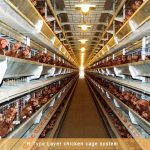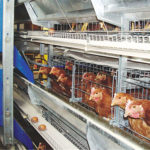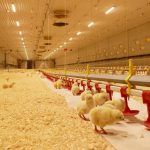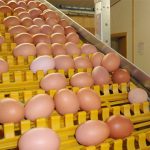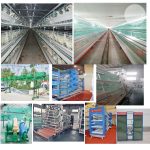1. Humidity influence
Whether the humidity of the chicken house is appropriate depends on the temperature change. In the case of constant temperature and excessive humidity, air dust, coat debris, and feed residues can form micro pulls and be inhaled into the respiratory tract by chickens, stimulating private membranes. For example, micro pulls entrain pathogenic microorganisms, which can make micro pulls. Chicken body infection causes cough, bronchitis and so on. If the humidity in the house is high, the particles can absorb the moisture of the air, and can also adsorb a part of ammonia and hydrogen sulfide. Such mixed micro-pulling can also stimulate the mucosa of the respiratory tract and cause mucosal damage.
2, noise influence
Too much noise around the chicken coop may not only cause stress to the flock, but if the noise is between 90 decibels and 100 decibels, it can cause a temporary drop in laying hens, and continue to adapt gradually. However, noise that continues to exceed this intensity will further reduce the egg production of laying hens. The 130 decibel noise can make chickens lose weight and even die. But low-intensity light music can protect the chickens
Keep quiet, reduce the incidence of flocks, and promote sexual maturity of chickens, thereby increasing the egg production rate of the chickens.
3, light influence
The light color of the lighting equipment has different effects on laying hens in different regions. In the case of the same light intensity, red light has better effect, white light is second, and purple has almost no effect. The light intensity required for laying hens ranges from 0.1 lux to 5 lux, which can normally lay eggs at 0.1 lux, and 0.2 lux. The egg production increased, 2.0 lux brought the egg production to a very high level, more than 5 lux, the effect of increasing the egg production was not obvious. The breeder should ensure that the laying hen has 16 hours of light before laying, and 16.5 hours in the later stage. Farmers should not make the light time fluctuate.
4, temperature influence
The suitable production temperature for laying hens is 16℃-27℃. In winter, as long as the hen house is designed reasonably and the chicken’s body heats up, it can basically ensure a suitable temperature environment. In summer, the chicken body has no sweat glands and the body is covered with feathers. Mainly by increasing breathing rate and drinking water to speed up excretion and take away some of the heat, and these two heat removal methods are insignificant in high temperature weather. Therefore, lowering the temperature of the chicken house is the safest policy.
5. The impact of air quality
The air quality of the chicken houses of most farmers is not good. There are harmful gases such as ammonia and carbon dioxide exhaled by the chickens. If the farmers do not ventilate in time, it will affect the health of thelaying hens in chicken battery cage. , Make the physique of the laying hens weaker, and the natural egg-laying ability will not be good.


